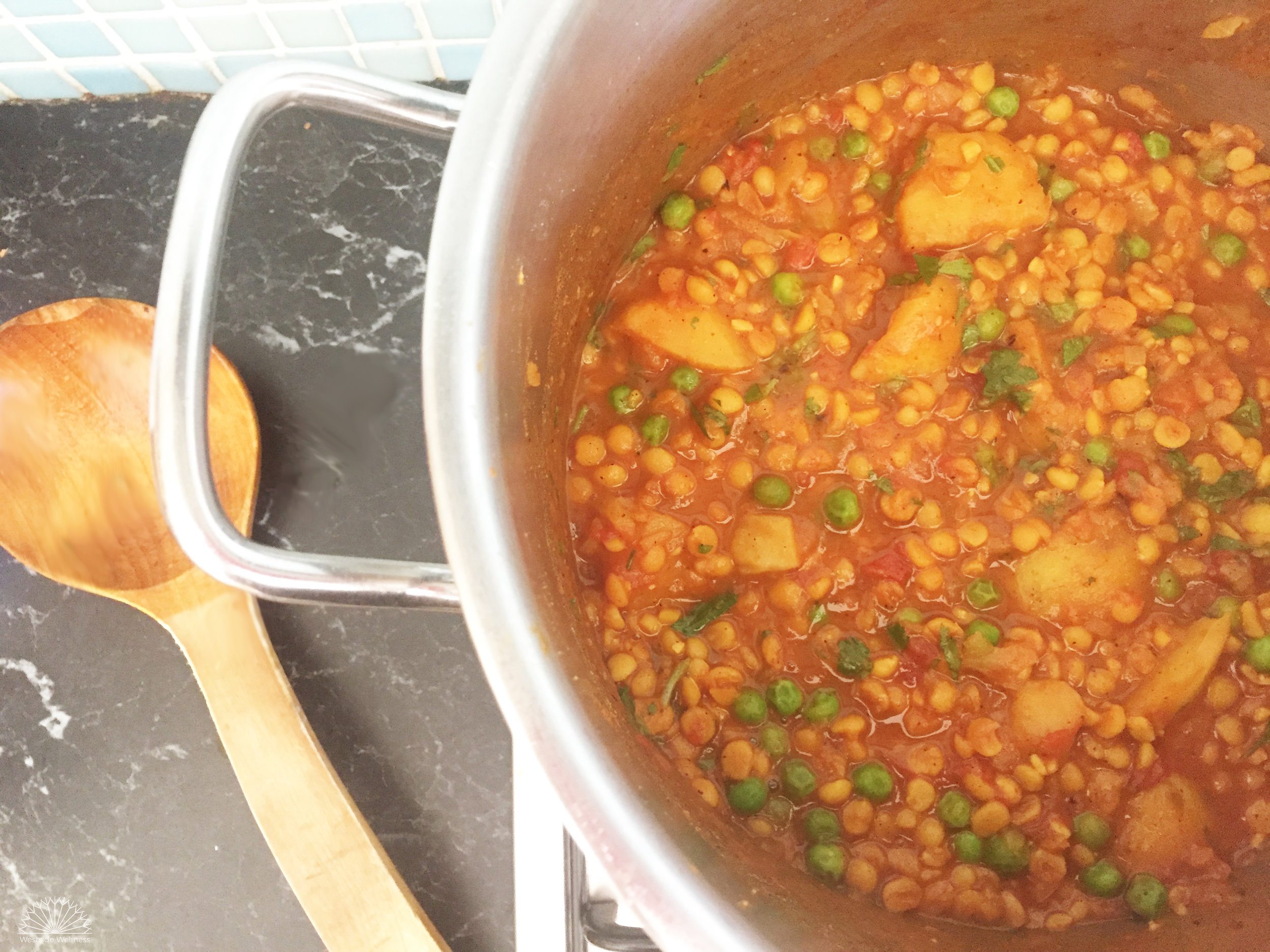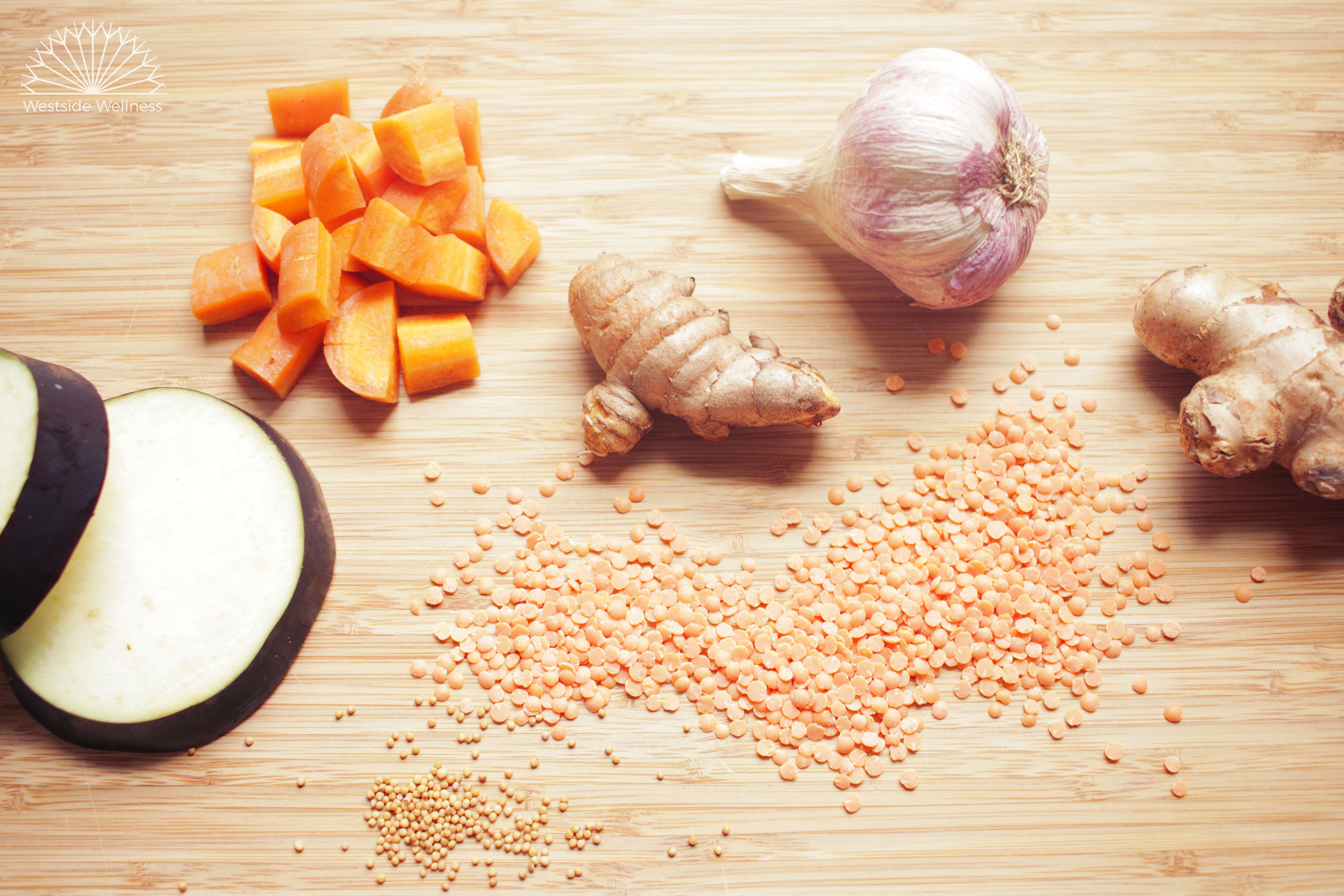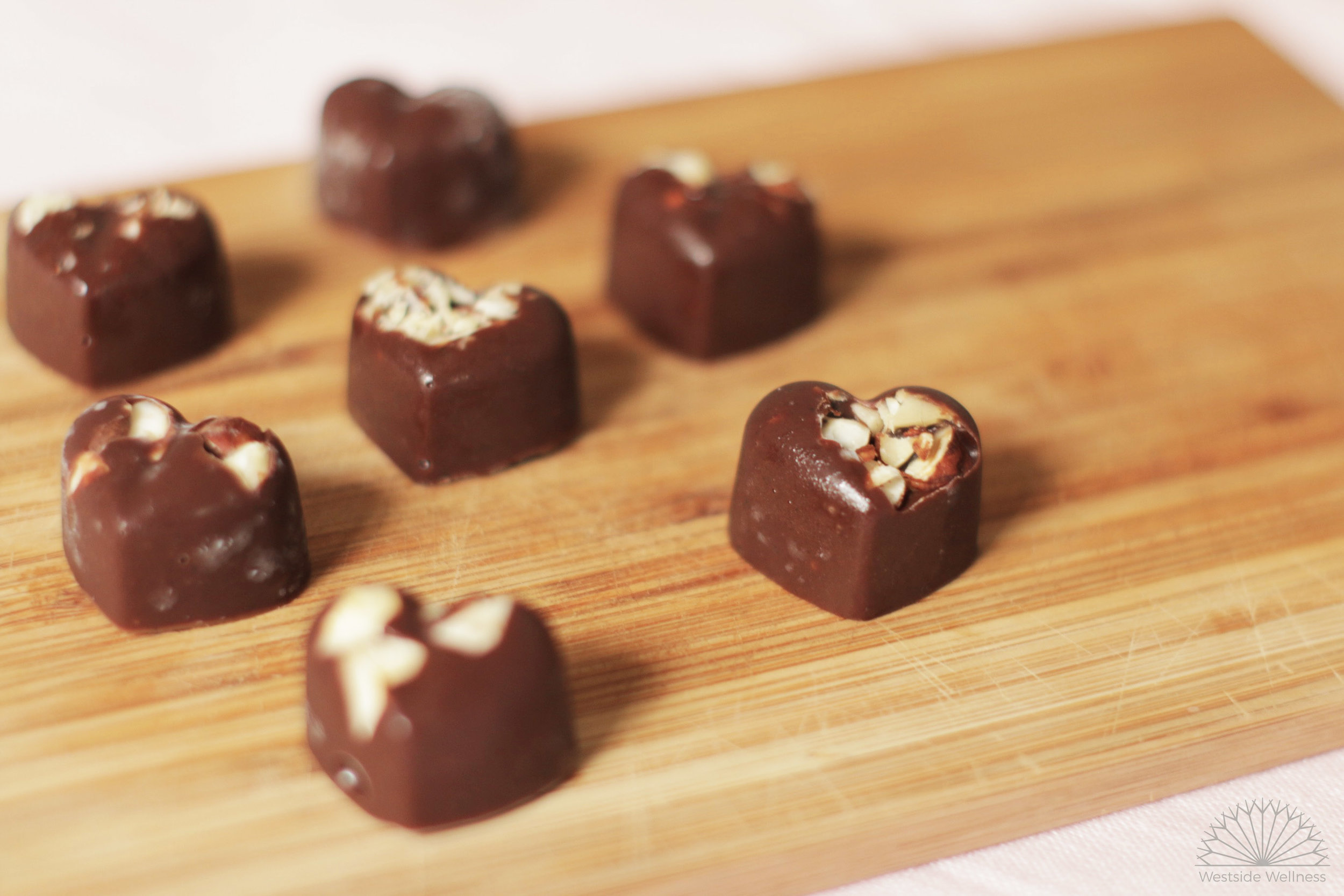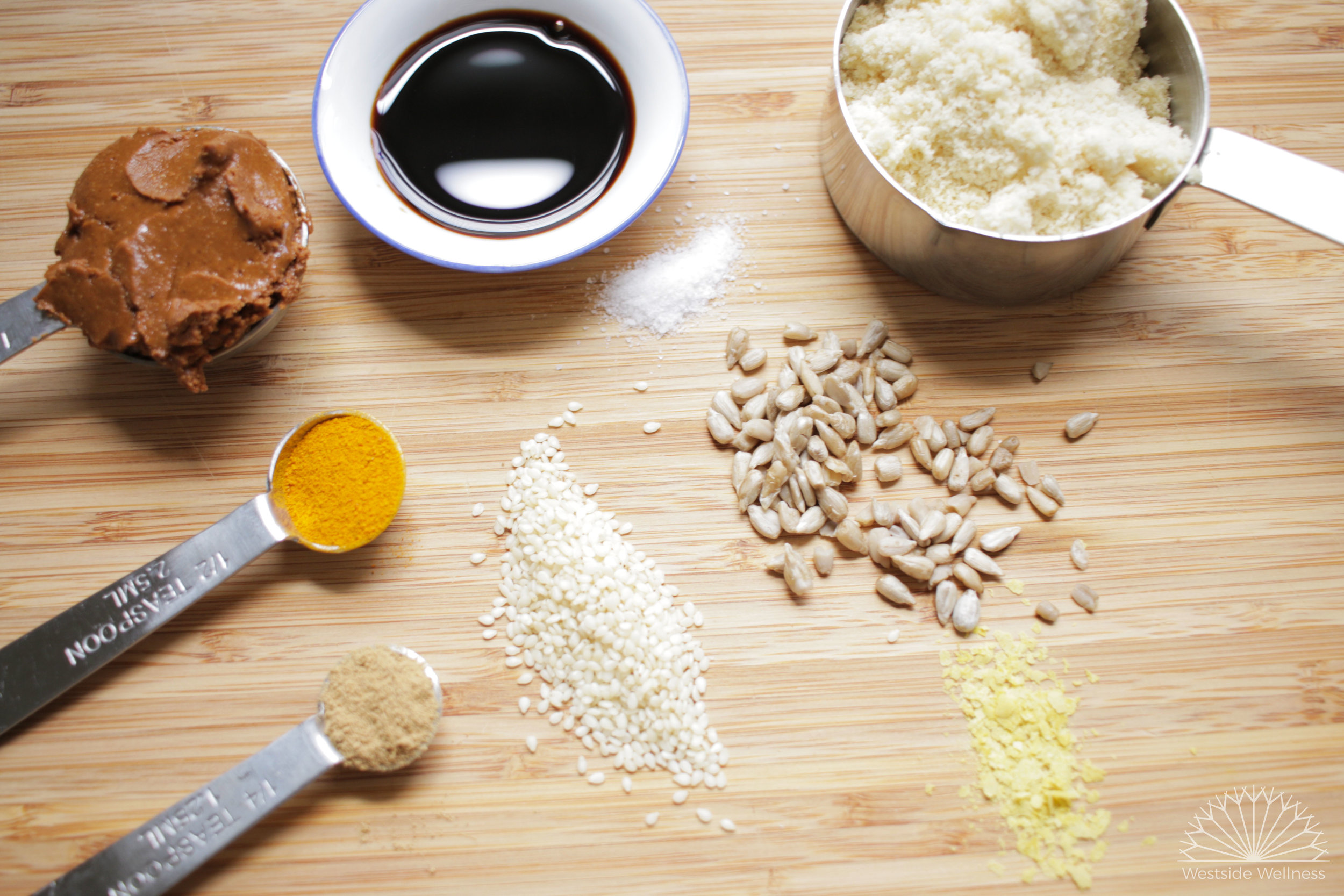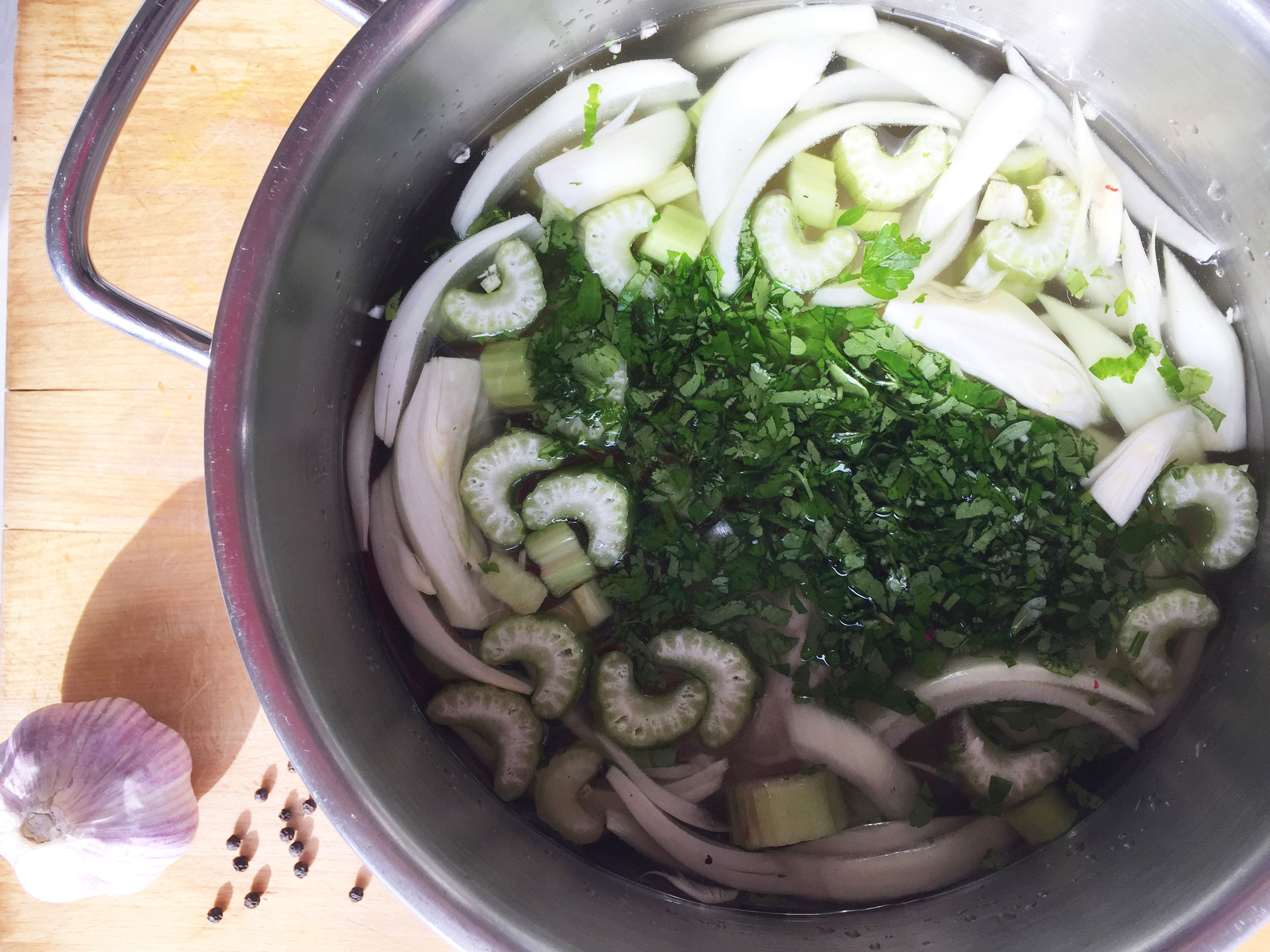At Westside Wellness we could live on curry forever!! Chana dal is a nutrient dense, fast, easy and budget-savvy meal. I cook it at least once a fortnight. The kids love it and it has mild and simple favours as far as curry goes. You can always swap the frozen peas for a handful of fresh spinach leaves to brighten the meal up.
Chana dal is made with split yellow peas - these legumes are packed full of fibre, carbohydrate, protein (including tryptophan, the precursor to our happy hormone - serotonin) and other minerals and vitamins. Yellow split peas contain both soluble and insoluble fibre which helps to keep your bowels regular, balance your blood sugar and cholesterol levels. And best of all - they are really filling! A cup of organic yellow split peas costs only $3 - so it's also an easy way to fill the family up when you are shopping on a budget!
Ingredients
- 1 tbs extra virgin coconut oil
- 500gm desiree or nicola potato, washed and chopped into large bite-sized chunks
- 1 cup of yellow split peas, rinsed thoroughly
- 1 brown onion, diced
- 1 clove of garlic, chopped
- 1 chunk of fresh ginger, grated (about the size of your thumb)
- 1 tbs garam masala
- 1 heaped tsp of turmeric powder
- 1 tsp fenugreek powder (optional)
- 1 tsp cumin powder
- 1 x 400g can of tinned tomato (or 4 medium sized diced fresh tomatoes)
- 1 tsp of tomato paste
- 1 tbs stock paste (or stock powder)
- 400mL water (or swap the stock past and water for bone broth).
- 1 x 400mL can of full fat coconut cream (alternatively you can make your own)
- 1 x cup of frozen peas
- Juice of 1 lime
- Half a bunch of coriander, chopped
Method
- Wash the yellow split peas and leave to soak for as long as you can (up to 12 hours)
- Melt the coconut oil in a large pot on medium heat until shimmering, then add the onion.
- Once the onions start to soften (about 4 minutes) add the garlic, ginger, garam masala, turmeric, fenugreek and cumin powder.
- Allow the spices to coat to the onions and the garlic and ginger to cook gently.
- Strain the yellow split peas and add them along with the potatoes to the onion mixture.
- Once the potatoes and peas are all coated in the spices then add the tomato paste, chopped/tinned tomatoes, stock paste/powder and water.
- After bringing the pot to the boil, add the coconut cream and quickly turn to the lowest heat.
- Simmer for 35 minutes, stirring the pot regularly to prevent the peas and potatoes from sticking to the pot.
- Add the peas and cook for another 8 minutes.
- Serve with chopped coriander and fresh lime juice. You can serve with cooked brown rice, quinoa or cauliflower rice to stretch the meal further.
Serves 6


